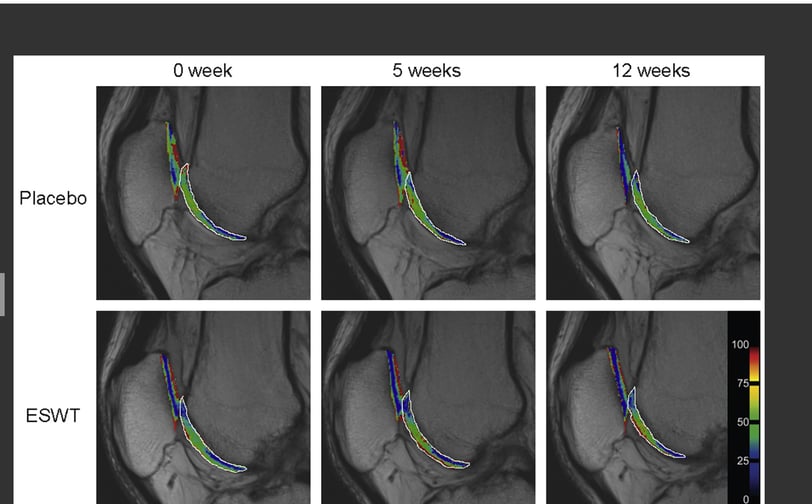The Importance of Pet Joint Health: Keeping Your Furry Friends Active and Comfortable
2/18/20255 min read


Understanding Pet Joint Health
Pet joint health is a crucial aspect of a pet's overall well-being, encompassing the condition and functionality of their joints, which are the points where bones meet. Healthy joints are essential for maintaining mobility, allowing pets to run, jump, and engage in activities that contribute to their happiness and quality of life. Understanding how joints function helps pet owners appreciate the significance of proactive care.
Joints are surrounded by cartilage, synovial fluid, and connective tissues, all of which work in harmony to provide stability and movement. The cartilage acts as a cushion, reducing friction between bones during movement, while synovial fluid lubricates the joints, facilitating smooth motions. Over time, however, factors such as age, weight, and genetics can adversely affect joint health. Pets may suffer from joint inflammation, arthritis, or degenerative joint disease, leading to decreased mobility and discomfort.
Maintaining optimal joint health in pets is imperative, as it directly impacts their ability to engage in everyday activities and enjoy an active lifestyle. Feeding pets a balanced diet that supports joint health, incorporating joint supplements where necessary, and ensuring regular exercise can play significant roles in sustaining their mobility. Early intervention is key; recognizing signs of joint discomfort or limitations can lead to timely treatment, minimizing the risk of severe complications down the line. When pet owners invest in their furry friends' joint care, they help to secure a healthier, more active future, enhancing the quality of life for their beloved companions.
Common Joint Problems in Pets
Joint health plays a crucial role in maintaining the overall well-being of pets, as joint issues can greatly affect their daily activities and lifestyle. Among the most frequently observed conditions are arthritis, particularly osteoarthritis, and hip dysplasia. Osteoarthritis is a degenerative joint disease that results in the gradual breakdown of cartilage, often leading to pain, stiffness, and reduced mobility. This condition is particularly prevalent in older pets, though it can also affect younger animals due to obesity or previous injuries.
Pets suffering from arthritis typically exhibit noticeable changes in behavior, such as reluctance to jump, play, or climb stairs. They may also manifest signs of discomfort during movement, including limping or stiff walking, which can indicate pain in the affected joints. Early recognition of these symptoms is essential, as timely intervention can significantly enhance their quality of life. It is also noteworthy that certain breeds, especially large or giant breeds like Labrador Retrievers and Rottweilers, are genetically predisposed to developing osteoarthritis.
Another common joint-related issue is hip dysplasia, a hereditary condition where the hip joint does not fit properly into the hip socket. This malformation can lead to arthritis, pain, and eventual joint degeneration. Symptoms of hip dysplasia often include difficulty in standing up, decreased activity levels, and an unusual gait or stance. It is most commonly diagnosed in larger breeds, but smaller breed dogs can also be affected.
Joint health issues can significantly impact a pet's lifespan and its overall quality of movement. This underscores the importance of regular veterinary check-ups to monitor joint condition, especially in breeds prone to these ailments. Being proactive in recognizing the signs of joint discomfort can lead to better management strategies and ensure that our furry companions remain active and comfortable as they age.
Preventive Measures and Care for Healthy Joints
Maintaining optimal joint health is crucial for the longevity and quality of life of our pets. A multifaceted approach, incorporating nutrition, exercise, weight management, and the use of supplements, is essential in supporting healthy joints. These factors play a significant role in reducing the risk of joint-related diseases such as arthritis, thus ensuring that pets remain active and comfortable throughout their lives.
One of the first steps pet owners can take is to provide a balanced diet rich in nutrients that promote joint health. Foods that contain omega-3 fatty acids, glucosamine, and chondroitin sulfate can significantly benefit joint function. These components help reduce inflammation and cushion the joints, making meals that include fish, or specially formulated dog and cat foods with these supplements an excellent choice. Consultation with a veterinarian can help identify the best nutritional options tailored to the specific needs of your pet.
Incorporating regular exercise into your pet’s routine is equally important. Consistent physical activity helps maintain muscle strength and a healthy weight, which is vital for reducing stress on the joints. Engaging in low-impact activities, such as walking, swimming, or playing fetch, can enhance mobility and support joint function while preventing overexertion. It is essential to pay attention to the pet’s capabilities and gradually increase the intensity of exercises according to their comfort levels.
Weight management cannot be overstated in the context of joint health. Excess weight not only places added strain on joints but can also exacerbate pain associated with existing joint conditions. Regular veterinary check-ups can help monitor your pet's weight and overall health, allowing for adjustments in their diet and activity levels as necessary.
In addition to diet and exercise, various joint supplements are available that may offer further support. These products often contain active ingredients that promote joint lubrication and tissue repair. Again, it is advisable to consult with a veterinarian to determine the best options for your pet’s unique health profile.
Lastly, creating a supportive home environment for pets can further alleviate joint stress. Providing orthopaedic bedding, ensuring easy access to food and water, and minimizing stairs or other obstacles can make a significant difference in a pet’s mobility and overall comfort. Such proactive measures enable pet owners to contribute effectively to their furry friends’ joint health and well-being.
When to Consult a Veterinarian
Recognizing when to seek veterinary advice regarding your pet's joint health is essential to ensuring their well-being. Joint issues are often subtle at first, but certain signs can indicate the need for professional evaluation. One of the primary indicators of potential joint problems is a noticeable change in behavior. For instance, if your pet exhibits reduced activity levels, reluctance to jump or climb stairs, or displays signs of discomfort when moving, it may be time to consult a veterinarian.
Other symptoms that warrant a visit to the vet include limping, swelling in the joints, or an unusual gait. These physical manifestations can often signify underlying issues such as arthritis, ligament injuries, or other joint disorders. If you notice any of these symptoms persisting for more than a couple of days, it is advisable to schedule an appointment for a professional assessment.
During a veterinary consultation, the professional may perform physical examinations and recommend diagnostic tests such as X-rays or blood work to evaluate your pet’s joint health comprehensively. These tests can help identify specific conditions affecting the joints and guide appropriate treatment options. Moreover, it is important to maintain open lines of communication with your veterinarian about any concerns or changes observed in your pet's health.
Regular check-ups are crucial for early detection of joint issues. Many pet owners underestimate the significance of preventive care, which can lead to more serious health problems if left unaddressed. Establishing a routine veterinary schedule not only aids in monitoring joint health but also promotes overall wellness in your pet. By being vigilant and proactive, you can help ensure your furry friend's joints remain healthy and functional, contributing to a happier, more active life.
Stay Connected
Follow us on InstaGram for heartwarming stories, expert advice, and updates on innovative arthritis treatments for pets.
ARE YOU A VETERINARIAN PROFESSIONAL?
Contact Info:
© 2025 Happy Pets, Inc. All rights reserved. | Terms and Conditions
2760 Broad Street Austell,
Georgia 30106
Info@HappyPetsHealthyJoints.com
